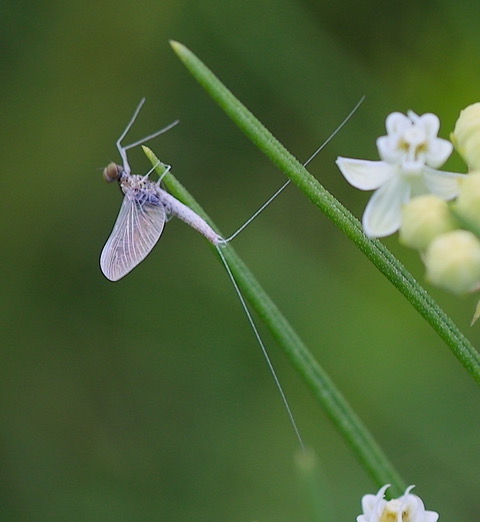I’ve fished the lower Fox River by boat for the last 45 years. During that time, I’ve caught a lot of fish and seen a lot of neat things along the river. A recent hike at the Hoover Forest Preserve reminded me of one of my favorite things to do while fishing: observing the birds from my boat as a mayfly hatch takes place on the river. I’ve often said that I’m very glad that I’m not a mayfly…LOL! For their entire lifecycle, they are prey for both aquatic and avian predators. If the fish don’t get them, the birds will! Survival of their species depends on mass “hatches” of mayflies, resulting in thousands and thousands of the insects emerging simultaneously, undergoing their metamorphosis from an aquatic nymph stage to their adult stage as a flying insect. The sheer numbers of mayflies emerging ensure that enough individuals avoid predation to result in the sustainability of the species. While this column is not going to go into detail about the life cycle of a mayfly (perhaps another time!), a brief mention is apropos as the mayflies become one of the principal prey of the subject of this blog The Eastern Kingbird and other members of the tyrant flycatcher (Tyrannidae) family.
“Sallying” for Mayflies
On my recent hike at Hoover, I noticed a few pale-yellow mayflies emerging from the surface of the river. I also noticed that several Eastern Kingbirds were sitting on perches above the river waiting to make a meal of the hapless mayflies. Kingbirds are very efficient in seeing, capturing and eating these poor little bugs. I have often marveled at the eyesight of these birds. I would watch the mini-drama unfold as a mayfly would emerge from the surface of the river at the beginning of a hatch and I’d see an Eastern Kingbird that was perched at the top of a tree at least 40 yards away. The bird would spot the little mayfly and swoop down from his perch to catch the poor bug in midair before it got more then ten feet above the surface, then return to his original treetop perch! This particular feeding style of hunting from a perch and then returning to the same perch is characteristic of tyrant flycatchers and is known as “sallying.”
Meet the Local Tyrants
While Eastern Kingbirds, as their name suggests, are one of the biggest and most relentless hunters of mayflies and other insects along the Fox River and its surrounding environs, they are certainly not the only members of the tyrant flycatcher (Tyrannidae) family that inhabit our area. The Tyrannidae represent probably the largest family of birds in the world. They inhabit North and South America and consist of over 400 species. A few of the other flycatchers that are present in our area include the Eastern Phoebe, Eastern Wood Pewee, Great Crested Flycatcher, Acadian Flycatcher, Willow Flycatcher and Alder Flycatcher. Many of these birds are very similar in appearance. The Eastern Pewee and Eastern Phoebe are difficult to tell apart. The Willow and Alder Flycatchers are virtually indistinguishable from each other until you hear their calls. In the following sections, I’ve included pictures and a very brief description of some of these little tyrants that you’re likely to encounter when visiting the Fox River.
Eastern Kingbird
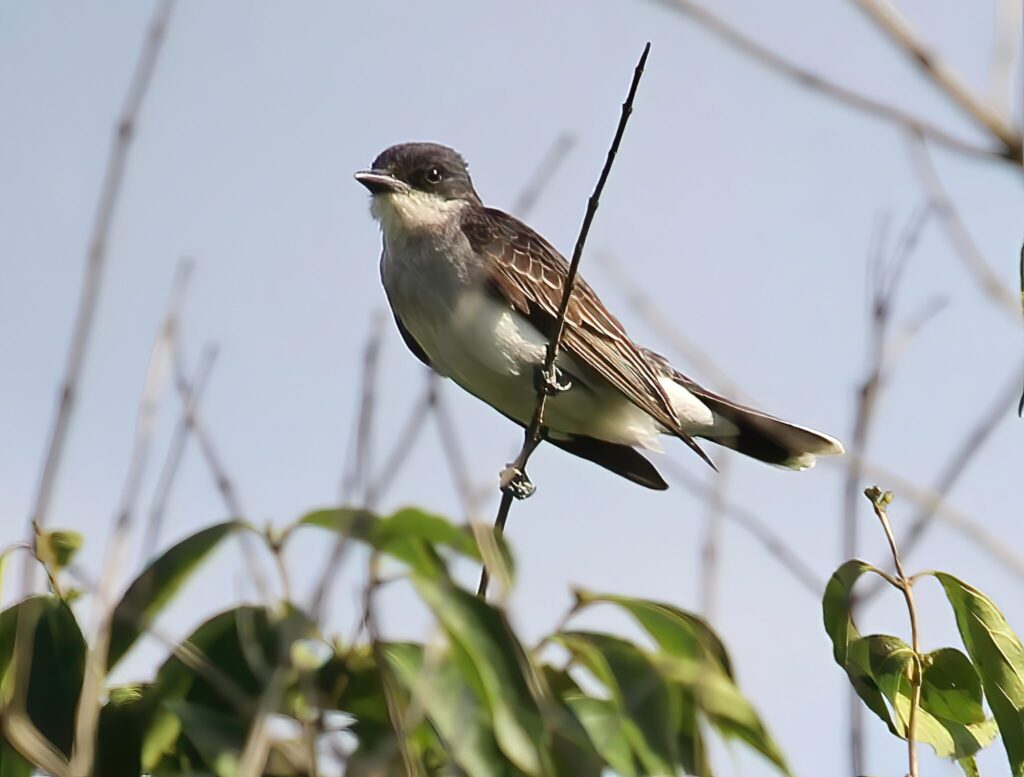
While many flycatchers that occur in our area are difficult to tell apart, the Eastern Kingbird isn’t one of them. They have very dark plumage (nearly black) on their head, back, wings and tail and white feathers on their breast. The best identifying feature of Eastern Kingbirds is a white margin or band on the trailing edge of their tails.
Eastern Phoebe and Eastern Wood Pewee
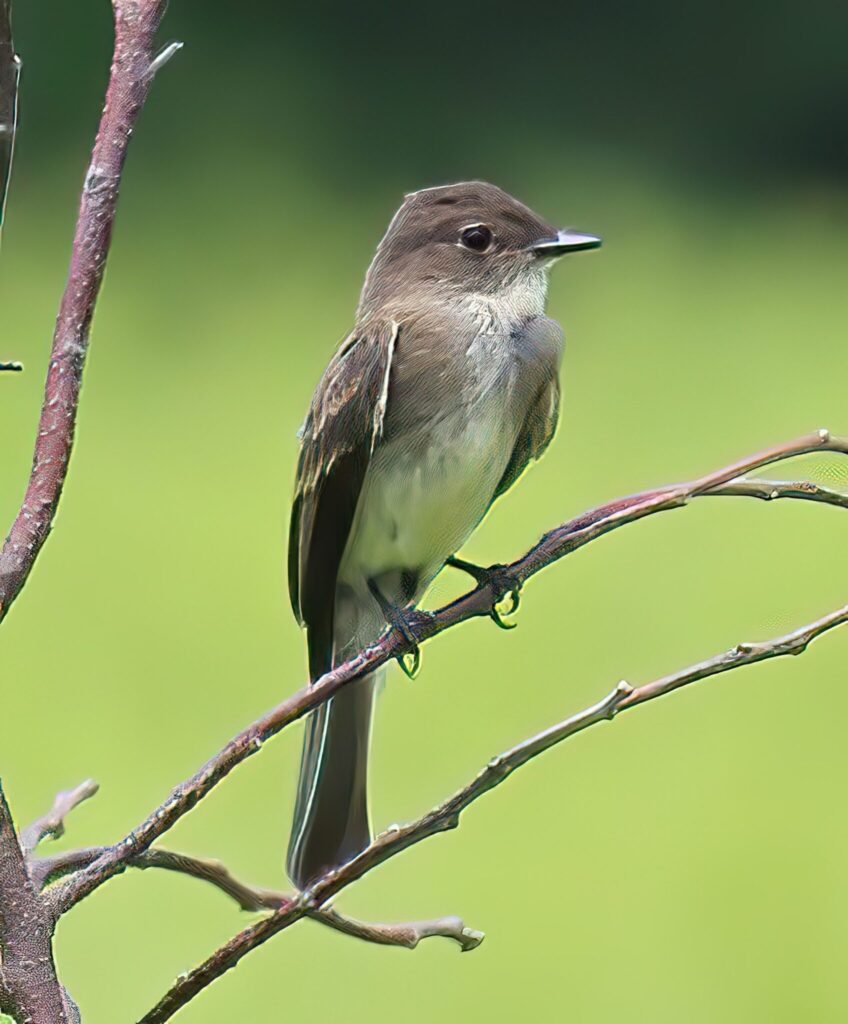
Eastern Phoebes and Eastern Wood Pewees are quite similar in appearance. The Eastern Phoebe has a totally black bill while the Eastern Wood Pewee has an orangish lower mandible. The Eastern Phoebe also has a habit of “tail bobbing” or flicking its tail up and down quickly while the Eastern Wood Pewee doesn’t. Both the Eastern Phoebe and the Eastern Wood Pewee tend to perch in high places to survey the surrounding area for tasty insects. The Eastern Wood Pewee is more likely to stay in heavily wooded areas while the Eastern Phoebe is at home in more diverse areas.
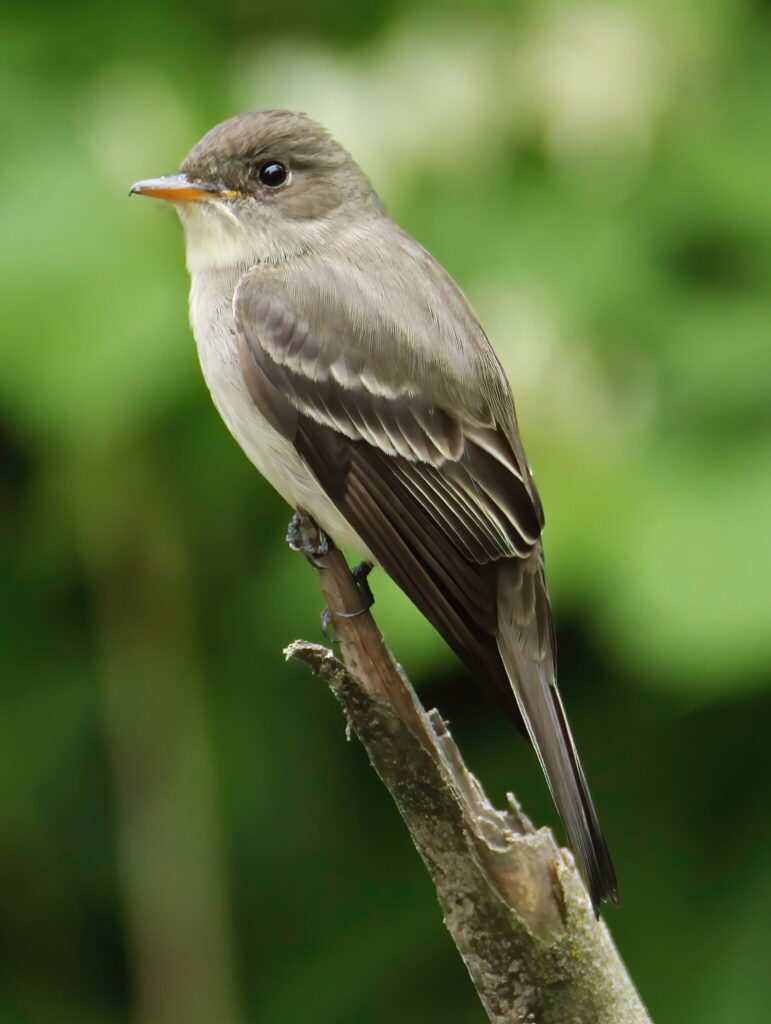
to the Fox River located in the Hoover Forest Preserve.
Great Crested Flycatcher
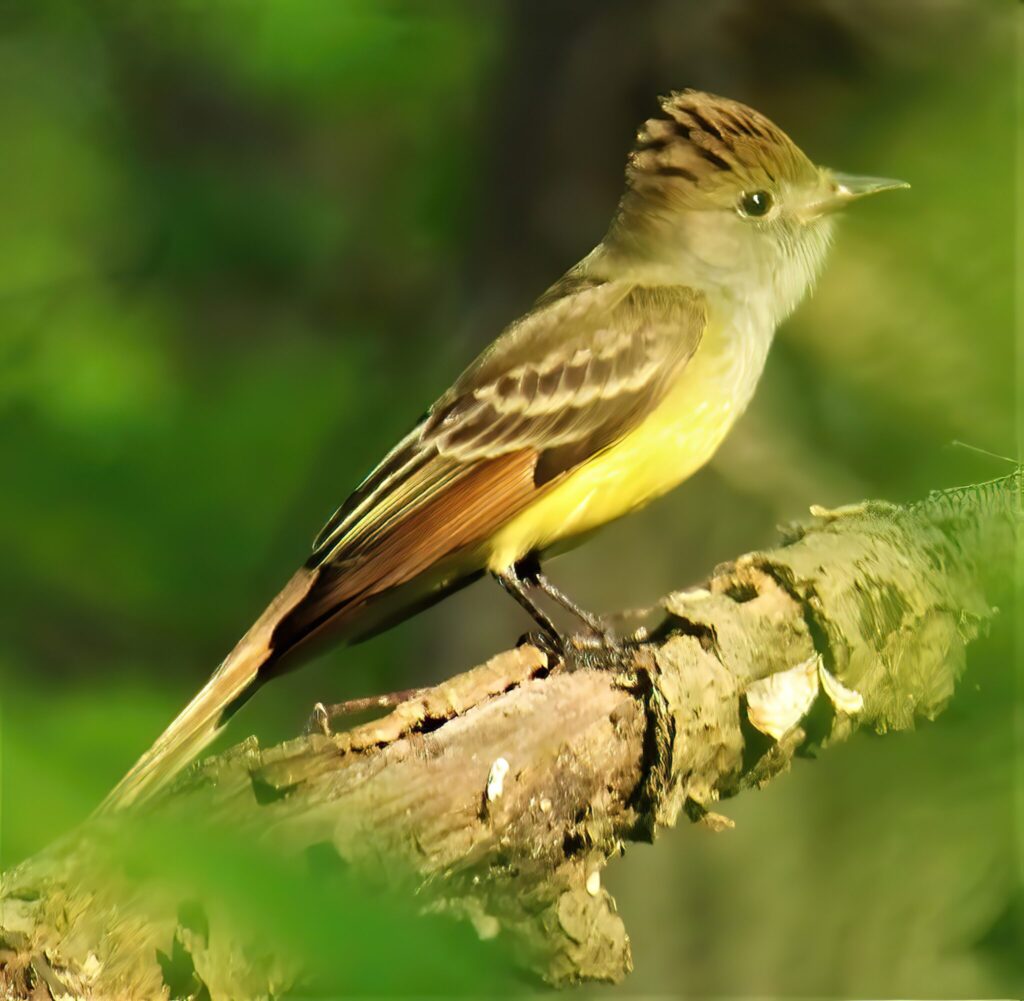
that are only slightly smaller than an American Robin.
This flycatcher is one of the biggest flycatchers in this area and is also one of the most colorful, exhibiting brownish feathers on its head, back, wings, and tail and a yellowish breast. As the name implies, they also have a “crest” of feathers that run along the tops of their heads that are quite apparent when the birds is excited or alarmed.
Acadian Flycatcher
The Acadian Flycatcher is another of the more colorful flycatchers that occur in our area. They are also one of the smaller ones. They are most likely to occur near the water and are one of my favorite flycatchers (along with the Eastern Kingbird). I would see these little birds “sallying” from their perches in the shrubbery along the river while I fished from my boat.
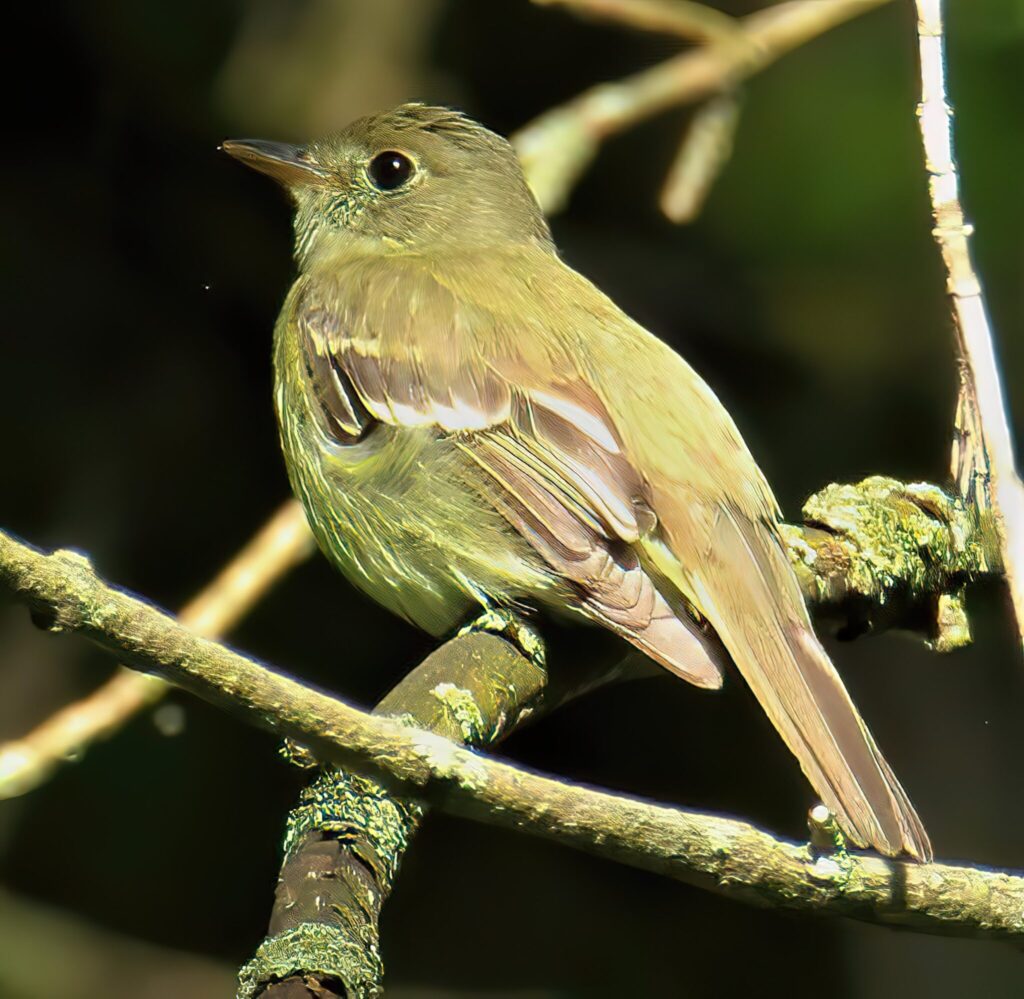
Conclusion
Next time you’re out for a walk along the Fox River, keep your eyes peeled for little birds that dart out over the river from perches in trees or bushes along the water to catch mayflies and other flying aquatic insects for their food. While some other birds (like the Cedar Waxwing) occasionally exhibit the same behavior, the birds you see will most likely be one of the tyrant flycatchers described here. Try your hand at identifying which species you observe. What they lack in spectacular color, they make up for in subtle beauty and very interesting behavior!
Until next time, get out and enjoy the natural wonders of our beautiful Fox River Valley!

